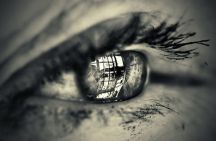
There are three methods to gaining wisdom. The first is reflection, which is the highest. The second is limitation, which is the easiest. The third is experience, which is the bitterest. Confucius
Is this reflective practice, or just what we do on a Sunday?
I think perhaps what we are doing is what Ghaye in 2000 called being brave enough to try to find a way to” work competently and ethically at the edge of order and chaos.” (as cited in Finlay)
Or is that just my reaction to getting near the end of a very busy, very wet Term 3?
Finlay’s article is complex and took quite some concentration in order to make some kind of personal meaning.
I do think that Schon’s concept of the importance of a reflective practitioner, rather than the process of reflection as an end in itself, is an idea which rings true with me. His description of ‘reflection-in-action’ as well as ‘reflection-on-action’ appears very much to align with my experience. Reflection-in-action is the day to day work in progress, the almost instinctive modification that happens in learning when we as teachers find that what we had supposed, planned, decided is not where our learners fit. Reflection-on-action is the Sunday afternoon think spot, where we use our old friend hindsight to review, analyse and inform practice- much as we do when we work with our children to look at success criteria and to decide on next steps in learning.
Finlay continues on to describe Schon’s ‘experience of surprise.’ She likens it to what Boyd and Fales in 1983 called ‘a sense of inner discomfort.’ The Spiral of inquiry describes this as the ‘hunch’-assumptions and beliefs about practices (Timperley, Kaser & Halbert, 2014). I definitely know that feeling- the little nag in your head which keeps you awake at night. It’s when we just know that something is not working in the way it should for that child or that group.
This essentially introspective practice can be quite limiting if we don’t engage in both inner and external dialogue. It’s funny, really, because until I stood aside from my own practice to examine that self-same practice I hadn’t thought about the importance of the dialogue. When we discuss with our peers we explore more deeply, we re- re-examine, we thrash it out until we have the courage to take some action. Mann et al (2007) reinforce this by suggesting that self- reflection may result in less effective reflection than that which is shared, simply because of the opportunity to listen to and respond to a range of experiences and opinions. One way in which we can introspectively carry on an externally situated conversation is through reading and research. It opens us up to the thinking and experiences of others.
I guess what the Mindlab experience, particularly over the latter half of this year, has done is force my hand a little in this deeper conversation and reflection.Whilst I am not exactly embracing Ghave’s chaos, I am pushing myself along that edge. I am trying hard to do what Boud and Walker suggest when they say that teachers who are really interested in reflection ” must confront themselves,their processes, and their outcomes” ( as cited in Finlay).
References:
Finlay,L.(2008). Reflecting on reflective practice.Retrieved from http://www.open.ac.uk/opencetl/files/opencetl/file/ecms/web-content/Finlay-(2008)-Reflecting-on-reflective-practice-PBPL-paper-52.pdf
Mann,K., Gordon,J., & MacLeod, A. (2007) Reflection and reflective practice in health professions education: a systematic review. Retrieved from http://www.researchgate.net/profile/Jill_Gordon/publication/5813985_Reflection_and_reflective_practice_in_health_professions_education_a_systematic_review/links/0c960517f54e18b6dd000000.pdf
Timperley, H., Kaser., L& Halbert, J. (2014). A framework for transforming learning in schools: Innovation and the spiral of inquiry. Retrieved from http://www.educationalleaders.govt.nz/Pedagogy-and-assessment/Evidence-based-leadership/Data-gathering-and-analysis/The-spiral-of-inquiry
I think the point about reflection being more effective when done with others – whether that is with colleagues or with the students themselves – is a good point. The variety of perspectives, interpretations and understandings shared would, I think, enhance the initial learning for the student and would give valuable feedback and feed forward opportunities for the reflective practioner.
LikeLike